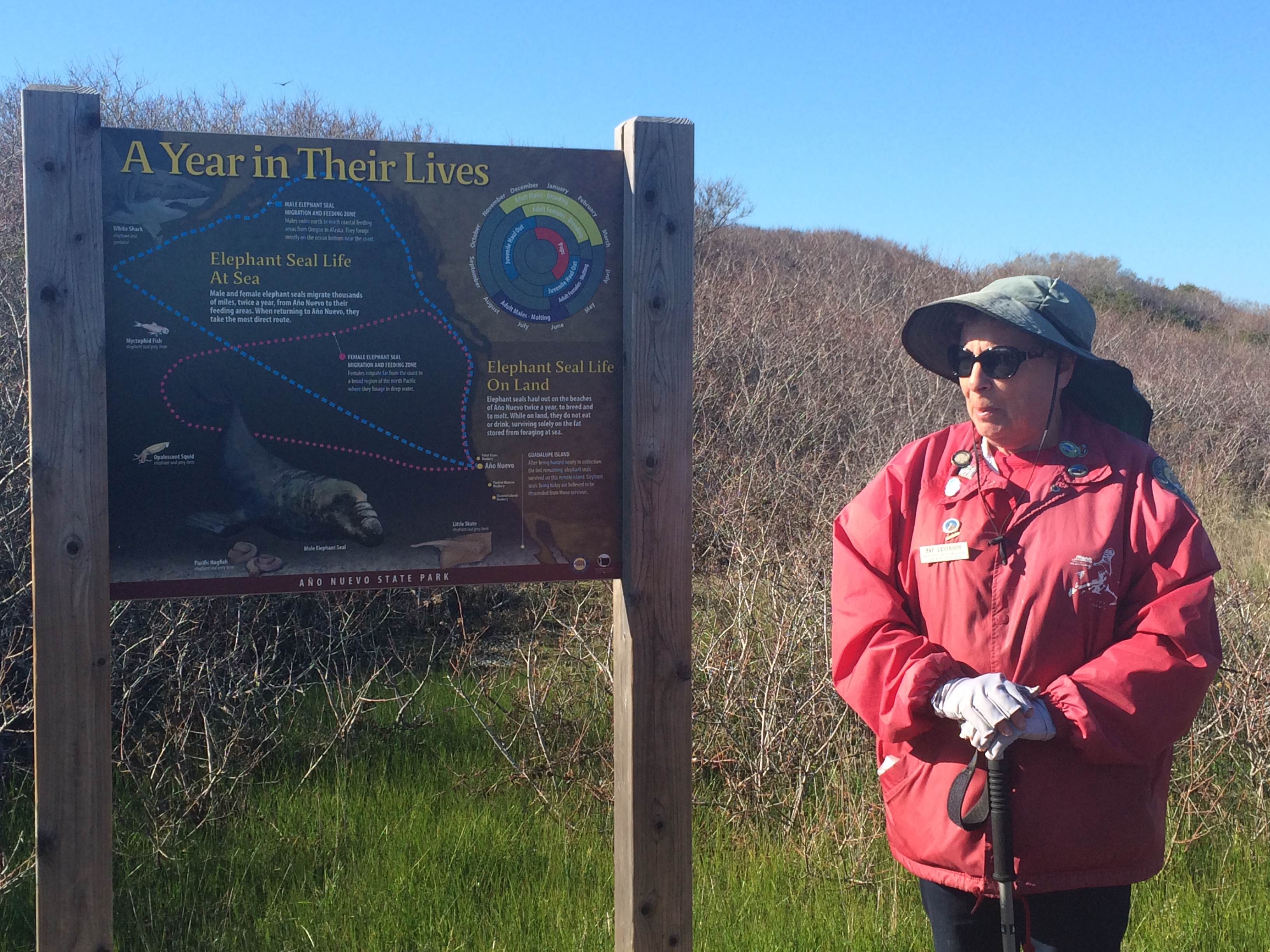2015 Ano Nuevo Trip

We seem to have nothing but perfect weather for our Slug outings. It was a gorgeous day for hiking the dunes and walking along the bluffs at Ano Nuevo State Park to view the elephant seals. Our docent (and fellow retiree) Fay Levinson informed us that the elephant seals are most active when it’s overcast. So although most were sleeping on the beach enjoying the afternoon sun, we did see quite a bit of activity.
Our location on the boardwalk placed us within a few feet of several elephant seals that included numerous males and two “harems” of females and their dominant male keepers.
Occasionally the distinctive roar of the young males caught our attention. Our eyes would turn to a pair challenging and battling each other. Were they just playing or anticipating the day they would take on a dominant alpha bull for control of the harem of females? Meanwhile, the alpha bulls couldn’t be bothered and seemed quite content lying among their harems. Although we didn’t get to see any cows giving birth, we did see plenty of pups, moms huddled together and calling to each other in their distinctive voices.
We learned quite a bit from Fay. Elephant seals spend the majority of their lives at sea (“elephant seals are capable of diving a mile deep and holding their breath for up to two hours under water”) and only come on shore to molt, mate and give birth. “Pups nurse about 28 days and can quadruple their weight from about 75 lbs to 300 lbs in that period of time. The milk fat ends up being 55 percent, and the pups drink the equivalent of about 75 double dip milkshakes per day.” And talk about big, “an adult male seal can weigh up to 5000 lbs, the equivalent of two major league football teams on the field.” Picture the Seahawks and Patriots at the Superbowl!
The seals are scattered up and down the coastline, in between dunes, resting in ponds. We viewed only a small portion of the total population of elephant seals in residence on our visit (total males 350; females 781; pups 426; weaners 3). The elephant seals arrive daily with the total number increasing through the end of the breeding season. Last year Fay said there were 1800 females and 1800 pups by the end of the season that runs December through March.
Another wonderful Silver Slug outing to be added to our list of “let’s do this again next year” events!


